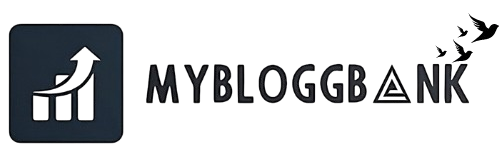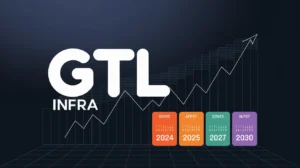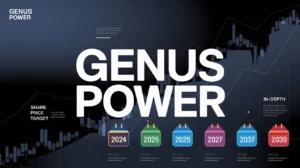Table of Contents
- Introduction
- What is Bharat Heavy Electricals (BHEL) Ltd?
- Overview of BHEL Company
- Financial Data Analysis of BHEL
- Financial Performance Summary
- BHEL Share Price Target Growth Rate
- BHEL Share Price Targets
- How to Purchase BHEL Shares
- Peer Companies of BHEL
- Investor Types and Ratios
- Advantages and Disadvantages of BHEL Shares
- FAQ
- Is BHEL a good investment for the long term?
- What are the risks associated with investing in BHEL?
- How has BHEL performed in the last five years?
- What sectors does BHEL operate in?
- How does BHEL contribute to the renewable energy sector?
- How can I buy BHEL shares?
- Who are the major shareholders of BHEL?
- What are BHEL's plans for future growth?
- What will BHEL's share price be in 2024?
- What are the expected share price targets for BHEL in 2026?
- What is the anticipated share price of BHEL in 2027?
- What will be BHEL’s share price in 2030?
- What is the projected share price of BHEL in 2040?
- Conclusion
Introduction

If you’re contemplating which shares to invest in, BHEL (Bharat Heavy Electricals Limited) should be on your radar. This article will provide a comprehensive analysis of BHEL share price target from 2024 to 2030. Our research, bolstered by expert insights, delves into the company’s growth trajectory, financial performance, and market potential.
What is Bharat Heavy Electricals (BHEL) Ltd?
Bharat Heavy Electricals Ltd (BHEL) is one of India’s largest engineering and manufacturing companies. Established on November 13, 1964, BHEL is engaged in the design, engineering, construction, testing, commissioning, and servicing of a wide range of products across various sectors. These include power generation, transmission, transportation, renewable energy, oil and gas, and defense and aerospace.
Overview of BHEL Company
BHEL is mainly engaged in manufacturing power equipment. The company is also engaged in sectors, including renewables transmission (thermal gas hydro nuclear solar PV),Energy trading and Non-Conventional Energy(ECE). In addition, BHEL has entered into transportation space and various verticals in defense & aerospace besides oil & gas emissions and is also making strong inroads dedicatedly for EV chargers. The company is a minivation of the Indian government (64% ) and was established in New Delhi.
Company Snapshot:
| Company Name | Bharat Heavy Electricals Limited |
| Established | 1964 |
| Market Cap | ₹1,14,412.63 Crore |
| DIV. YIELD | 0.09% |
| Book Value | ₹72.32 |
| Face Value | ₹2 |
| 52 Week High | ₹336.25 |
| 52 Week Low | ₹92.05 |
| CEO | Mr. Nalin Singhal |
Currently BHEL has 16 manufacturing plants, 4 power Sector regional centers and a large number of project sites spread across India. The company has presence in over 150 projects completed and under execution worldwide, with number of employees exceeding 30,000 including some engineers as well.
Financial Data Analysis of BHEL
So you must analyze the company financial and share price performance before investing in any stock. This is to cover key financial ratios and performance in our metrics for BHEL.
PE Ratio
The Price to Earnings (PE) Ratio is one of the most important indicators as it enables investors to evaluate stock market value relative to its earnings. Noteworthy (BHEL) BSE: 500103 Last Trade : Sep -31,2012 Technical IndicatorTesting Value AverageGain S / L PE Ratio 437.23 Maybe.
Return on Assets (ROA)
ROA indicates how well a company is using its assets to generate profit. The ROA of BHEL is a bit low at 0.83%.
Current Ratio
Current Ratio: A measure of a company’s ability to pay off its short-term liabilities with current assets. BHEL’s Current Ratio is 1.30.
Return on Equity (ROE)
Return on equity (ROE) is the return earned on common stockholders’ equity. BHEL’s ROE is 1.69%, which again on the lower side.
Financial Performance Summary
| Metric | Value | Interpretation |
| PE Ratio | 437.23 | Overvalued |
| Return on Assets | 0.83% | Low |
| Current Ratio | 1.30 | Adequate |
| Return on Equity | 1.69% | Low |
BHEL Share Price Target Growth Rate
Over the last five years, BHEL’s share price has demonstrated significant growth. Here’s a summary of the growth rates:
| Period | Growth Rate |
| Last Month | 12.24% |
| Past 6 Months | 91.58% |
| Past 1 Year | 254.36% |
| Last 5 Years | 295.05% |
| Maximum Rate | 1398.07% |
BHEL Share Price Targets
Based on the company’s financial performance and market conditions, here are the projected share price targets for BHEL from 2024 to 2030.
BHEL Share Price Target 2024
BHEL’s focus on power generation, including renewable sources, positions it well for growth. The share price is expected to benefit from increased demand in these sectors.
| Year | 1st Target Price | 2nd Target Price |
| 2024 | ₹270 | ₹380 |
BHEL Share Price Target 2025
BHEL’s involvement in rail transportation and defense sectors contributes to its diversified revenue streams. The company’s projected share price targets for 2025 are:
| Year | 1st Target Price | 2nd Target Price |
| 2025 | ₹510 | ₹685 |
BHEL Share Price Target 2027
BHEL’s advancements in e-mobility and battery energy storage systems are expected to drive substantial growth.
| Year | 1st Target Price | 2nd Target Price |
| 2027 | ₹965 | ₹1110 |
BHEL Share Price Target 2030
By 2030, BHEL’s investments in research and development and its strong market presence are likely to yield high returns.
| Year | 1st Target Price | 2nd Target Price |
| 2030 | ₹1785 | ₹1920 |
How to Purchase BHEL Shares
Investing in BHEL shares can be done through various trading platforms. Here are some popular options:
- Zerodha
- Upstox
- Groww
- AngelOne
Peer Companies of BHEL
Understanding the competitive landscape is essential for investors. Here are some of BHEL’s peers:
| Company Name | Sector |
| Aamcol Tools | Tools |
| Acrow India | Construction |
| Action Const | Construction |
| Aeroflex Ind. | Industrial |
| Akar Auto Indus | Automotive |
Investor Types and Ratios
The distribution of investors in BHEL shares is an important factor. Here’s a breakdown:
| Investor Type | Percentage |
| Public Holder | 14.96% |
| Promoter Holder | 64.01% |
| FII | 7.01% |
| DII | 14.02% |
Advantages and Disadvantages of BHEL Shares
Every investment comes with its pros and cons. Here are the advantages and disadvantages of investing in BHEL shares.
Advantages
- Increased Annual Net Profit: BHEL’s annual net profit has shown an upward trend in the last two years.
- Strong Promoter Holding: With 64% promoter holding, the company has significant backing.
- Zero Promoter Pledges: This indicates financial stability.
- Low Debt: The company has a low debt-to-equity ratio.
Disadvantages
- Poor Revenue Growth: The company’s revenue growth has been modest at 3.01% over the last two years.
- High PE Ratio: The PE ratio of -610.56 indicates overvaluation.
- Falling Net Profit: The trailing twelve months (TTM) net profit has been declining.
Also Read: Zomato Share Price Target 2024, 2025, 2026, 2027, 2030, 2040 & 2050. Comprehensive Forecast
FAQ
Is BHEL a good investment for the long term?
BHEL has shown consistent growth and has a strong presence in the power and industrial sectors. With its focus on renewable energy and electric mobility, it holds potential for long-term investment. However, investors should consider its financial metrics and market conditions before investing.
What are the risks associated with investing in BHEL?
Some of the risks include its high PE ratio, modest revenue growth, and fluctuating net profits. Additionally, market volatility and changes in government policies can impact its performance.
How has BHEL performed in the last five years?
BHEL’s share price has experienced significant growth over the last five years, with a maximum growth rate of 1398.07%. Its performance reflects its expanding operations and increasing investor interest.
What sectors does BHEL operate in?
BHEL operates in various sectors including power generation, renewable energy, rail transportation, defense and aerospace, oil and gas, and electric mobility.
How does BHEL contribute to the renewable energy sector?
BHEL manufactures equipment for solar, wind, and hydroelectric power generation. It also provides solutions for energy storage and electric vehicle charging infrastructure.
What are BHEL’s plans for future growth?
BHEL is focusing on expanding its renewable energy operations, enhancing its R&D capabilities, and increasing its international presence with new projects. Its strategic initiatives in electric mobility and energy storage systems also highlight its future growth plans.
Conclusion
BHEL India is a major player in the Indian engineering and manufacturing sector with operations across power, transportation & renewable energy. The combination of its financial performance, strategic initiatives and market presence make it an attractive option for growth oriented investors. However, one needs to consider several pointers such as its financial ratios analysis etc. before making any investment actions.
Before investing in BHEL one has to be very sure about the company Financial health, Market trend and Future prospect. In conjunction with the information provided in this analysis, investors should feel much more confident making an informed decision on where BHEL headed and potentially benefit from what appears to be a period of growth.Disclaimer: The information provided is for educational purposes only. Please consult with a certified financial advisor before making any investment decisions.








